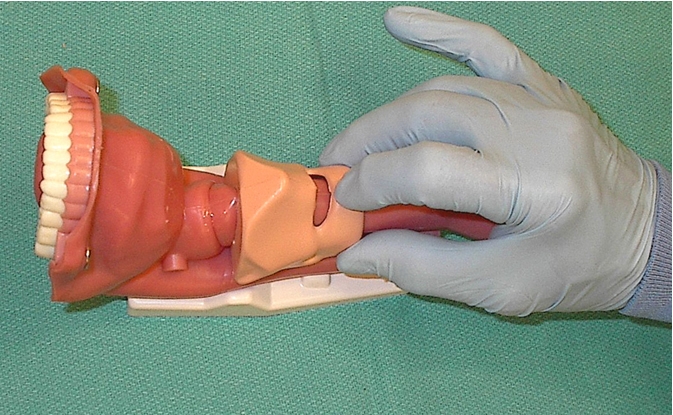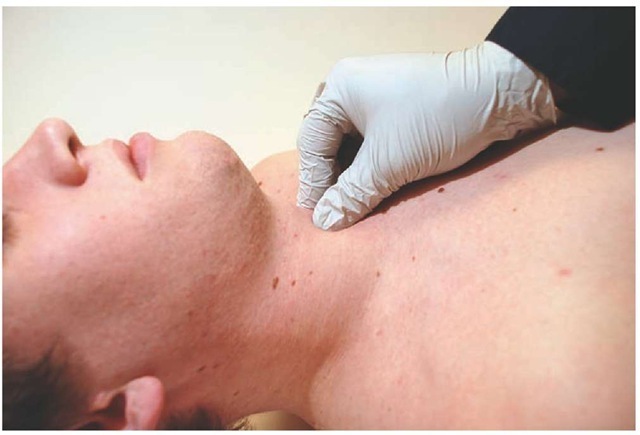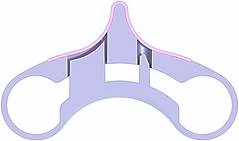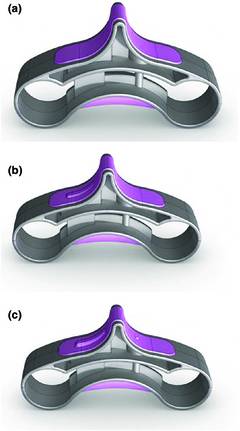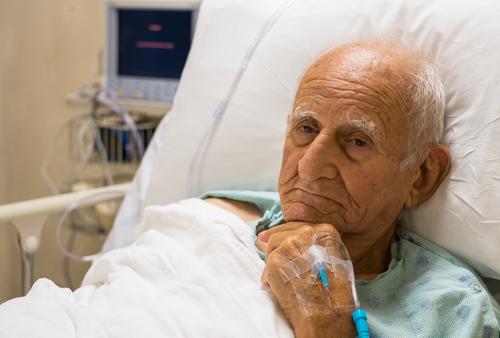| |
Postoperative Delirium Guideline |
| |
Postoperative Delirium Guideline for Older Adults |
| |
The American Geriatrics Society (AGS) has released a new practice guideline for preventing and treating postoperative delirium in patients aged 65 years or older. |
| |
Delirium is among the most common post-operative complications for older adults undergoing surgery. It is upsetting for patients and families, and can be harmful if not recognized and treated. Studies have shown that delirium can be prevented in up to 40% of cases in some hospitalized older adult populations. Surgical and related medical specialists, together with the multi-disciplinary members of their teams, can play an integral role in prevention. |
| |
|
| |
The recommendations in the best practices article range from what to do before, during, and after surgery to what not to do to prevent and treat delirium in postoperative patients. |
| |
They include : |
| |
 |
Clinicians should perform a preoperative and postoperative assessment of delirium risk factors, including age older than 65 years, poor vision or hearing, severe illness, and presence of infection or chronic cognitive decline or dementia. |
 |
Healthcare professionals should be trained in the recognition and documentation of delirium signs and symptoms. |
 |
Anesthesiologists "may use processed electroencephalographic monitors of anesthetic depth during sedation or general anesthesia," with the reasoning that administering fewer or lower doses will reduce postoperative delirium compared with deeper sedation. |
 |
Prescribers should avoid medications that may induce postoperative delirium, including anticholinergics, corticosteroids, meperidine, and hypnotics. The use of five or more medications increases the risk for delirium. |
 |
Clinicians should consider providing regional anesthesia during and after surgery for pain control. |
 |
Hospitals and healthcare systems should implement formal educational programs and refresher sessions and should develop multicomponent interventions to be delivered by multidisciplinary teams. |
 |
Prescribers should not prescribe antipsychotics or benzodiazepines to older patients who are not a threat for personal harm or harm to others and should not prescribe benzodiazepines as first-line treatment for such a patient. |
 |
Prescribers should use the lowest effective dose of benzodiazepines and antipsychotics for the shortest duration and only after behavioral interventions have failed. |
|
| |
I. Postoperative Delirium Risk Factors |
| |
| Risk Factors for Postoperative Delirium |
 |
Age greater than 65 y |
 |
Cognitive impairment |
 |
Severe illness or comorbidity burden |
 |
Hearing or vision impairment |
 |
Current hip fracture |
 |
Presence of infection |
 |
Inadequately controlled pain |
 |
Depression |
 |
Alcohol use |
 |
Sleep deprivation or disturbance |
 |
Renal insufficiency |
 |
Anemia |
 |
Hypoxia or hypercarbia |
 |
Poor nutrition |
 |
Dehydration |
 |
Electrolyte abnormalities (hyper- or hyponatremia) |
 |
Poor functional status |
 |
Immobilization or limited mobility |
 |
Polypharmacy and use of psychotropic medications (benzodiazepines, anticholinergics, antihistamines, antipsychotics) |
 |
Risk of urinary retention or constipation |
 |
Presence of urinary catheter |
 |
Aortic procedures |
|
| |
II. Delirium Diagnosis |
| |
| Symptoms Associated with Delirium |
 |
Change in level of arousal: drowsiness or decreased arousalor increased arousal with hypervigilance |
 |
Delayed awakening from anesthesia |
 |
Abrupt change in cognitive function (worsening confusion over hours or days), including problems with attention, difficulty concentrating, new memory problems, new disorientation |
 |
Difficulty tracking conversations and following instructions |
 |
Thinking and speech that is more disorganized, difficult to follow, slow, or rapid |
 |
Quick-changing emotions, easy irritability, tearfulness, uncharacteristic refusals to engage with postoperative care |
 |
Expression of new paranoid thoughts or delusions (ie, fixed false beliefs) |
 |
New perceptual disturbances (eg, illusions, hallucinations) |
 |
Motor changes such as slowed or decreased movements, purposeless fidgeting or restlessness, new difficulties in maintaining posture such as sitting or standing |
 |
Sleep/wake cycle changes such as sleeping during the day and/or awake and active at night |
 |
Decreased appetite |
 |
New incontinence of urine or stool |
 |
Fluctuating symptoms and/or level of arousal over the course of minutes to hours |
|
| |
III. Delirium Screening |
| |
| Common Diagnostic Systems for Delirium |
| Diagnostic and Statistical Manual, 5th Edition, must meet all A – E |
Confusion Assessment Method Algorithm, must meet I, II, and either III or IV |
A. Disturbance in attention (ie, reduced ability to direct, focus, sustain, and shift attention) and awareness (reduced orientation to the environment).
B. The disturbance develops over a short period of time (usually hours to a few days), represents an acute change from baseline attention and awareness, and tends to fluctuate in severity during the course of a day.
C. An additional disturbance in cognition (eg, memory deficit, disorientation, language, visuospatial ability, or perception).
D. The disturbances in criteria A and C are not better explained by a pre-existing, established, or evolving neurocognitive disorder and do not occur in the context of a severely reduced level of arousal such as coma.
E. There is evidence from the history, physical examination, or laboratory findings that the disturbance is a direct physiological consequence of another medical condition, substance intoxication or withdrawal (ie, due to a drug of abuse or to a medication), or exposure to a toxin, or is due to multiple etiologies.
|
I. Acute change and fluctuating course
a. Evidence of an acute change in mental status from the patient's mental status prior to hospitalization, and
b. Evidence that abnormal behavior fluctuates during the day (ie, tends to come and go or increase and decrease in severity).
II. Inattention
Evidence of difficulty focusing attention, eg, being easily distractible, or having difficulty keeping track of what is being said.
III. Disorganized thinking
Evidence that thinking is disorganized or incoherent, such as rambling or irrelevant conversation, unclear or illogical flow of ideas, or unpredictable switching from subject to subject.
IV. Altered level of consciousness
Any evidence of any mental state other than a normal level of alertness. (Altered states include vigilant or hyperalert, lethargic, drowsy or easily aroused, stuporous or difficult to arouse, coma or unarousable.)
|
|
| |
| Validated Delirium Screening Instruments |
| General delirium screening instruments |
| Confusion Assessment Method (CAM) - short form |
| Delirium Symptom Interview (DSI) |
| Nursing Delirium Screening Scale (NuDESC) |
| Intensive care unit screening instruments |
| Confusion Assessment Method for the Intensive Care Unit (CAM-ICU) |
| Intensive Care Delirium Screening Checklist (ICDSC) |
|
| |
CAM is used by many as a screening tool (short form) and as a diagnostic instrument (long form plus the algorithm). Increased reliability is demonstrated when used by trained evaluators using cognitive screening tests rather than as a screening tool informed only by routine patient care. |
| |
IV. Intraoperative Measures to Prevent Delirium |
| |
The anesthesia practitioner may use processed electroencephalographic monitors of anesthetic depth during intravenous sedation or general anesthesia of older patients to reduce postoperative delirium. |
| |
V. Medications as Risk Factors for Postoperative Delirium |
| |
| Commonly Used Medications Used in the Perioperative Setting That May Induce Postoperative Delirium |
| Drug class or drug |
Examples |
| Drugs with anticholinergic properties |
Tricyclic antidepressants: amitriptyline, doxepin, imipramine
Antihistamines: cyproheptadine, diphenhydramine, hydroxyzine
Antimuscarinics: oxybutynin, tolterodine
Antispasmodics: hyoscyamine, scopolamine
First-generation antipsychotics: chlorpromazine, thioridazine
H2-receptor antagonists: cimetidine, ranitidine
Skeletal muscle relaxants: cyclobenzaprine, tizanidine
Antiemetics: promethazine
Olanzapine
Paroxetine
|
| Corticosteroids |
Methylprednisolone
Prednisone
|
| Meperidine |
Meperidine |
| Sedative hypnotics |
Benzodiazepines: alprazolam, diazepam, lorazepam, midazolam
Sedative-hypnotics: zolpidem, zaleplon
|
| Polypharmacy |
Starting ≥5 new medications increases risk of delirium |
|
| |
VI. Pharmacologic Prevention of Postoperative Delirium |
| |
 |
A health care professional trained in regional anesthetic injection may consider providing regional anesthetic at the time of surgery and postoperatively to improve pain control and prevent delirium in older adults. |
 |
Optimize postoperative pain control, preferably with nonopioid pain medications, to minimize pain in older adults to prevent delirium. |
 |
There is insufficient evidence to recommend for or against the use of antipsychotic medications prophylactically in older surgical patients to prevent delirium. |
 |
In older adults not currently taking cholinesterase inhibitors, the prescribing practitioner should not newly prescribe cholinesterase inhibitors perioperatively to older adults to prevent or treat delirium. |
|
| |
VII. Nonpharmacologic Prevention and Treatment of Postoperative Delirium |
| |
| Behavioral and Nonpharmacologic Strategies for Prevention of Delirium |
 |
Sensory enhancement (ensuring glasses, hearing aids, or listening amplifiers) |
 |
Mobility enhancement (ambulating at least twice per day if possible) |
 |
Cognitive orientation and therapeutic activities (tailored to the individual) |
 |
Pain control with scheduled acetaminophen if appropriate |
 |
Cognitive stimulation (if possible, tailored to the individual's interests and mental status) |
 |
Simple communication standards and approaches to prevent the escalation of behaviors |
 |
Nutritional and fluid repletion enhancement |
 |
Sleep enhancement (daytime sleep hygiene, relaxation, nonpharmacologic sleep protocol, and nighttime routine) |
 |
Medication review and appropriate medication management |
 |
Daily rounding by an interdisciplinary team to reinforce the interventions |
|
| |
VIII. Medical Evaluation of Postoperative Delirium |
| |
| Precipitating Factors for Postoperative Delirium and Recommended Evaluation |
| Precipitant |
Evaluation considerations |
| Environmental factors |
|
| Inadequately controlled pain |
Physical examination
Prednisone
|
| Sleep disturbance |
Review of medical records, including nursing notes |
| Use of physical restraints |
|
| Use of bladder catheterization |
|
| Poor vision and/or hearing |
|
| Infection |
|
| Urosepsis |
Physical examination |
| Pneumonia |
Urinalysis and white blood cell count |
| Line sepsis |
Chest radiograph |
| Bacteremia |
Blood, sputum, and urine cultures |
| Surgical site infection |
Imaging of surgical site if indicated |
| Delirium-inducing medications |
Medication reconciliation |
| Metabolic derangement |
|
| Hypoxia |
Vital signs, including pulse oximetry |
| Acidosis |
Laboratory evaluation, including: |
| Electrolyte derangement |
Electrolytes, creatinine, blood urea nitrogen |
| Hypoglycemia |
Blood gas analysis |
| Dehydration |
Serum glucose |
| Acute blood loss anemia |
Serum hematocrit
|
| Hypotension/shock |
|
| Substance withdrawal |
|
| Alcohol |
Physical examination |
| Benzodiazepines |
Social history |
| Illicit drugs |
Preadmission medication reconciliation |
|
| |
IX. Pharmacologic Treatment of Postoperative Delirium |
| |
 |
The prescribing practitioner may use antipsychotics at the lowest effective dose for the shortest possible duration to treat patients who are severely agitated or distressed, and are threatening substantial harm to self and/or others. In all cases, treatment with antipsychotics should be used only if behavioral interventions have failed or are not possible, and ongoing use should be evaluated daily with in-person examination of patients. |
 |
The prescribing practitioner should not prescribe antipsychotic or benzodiazepine medications for the treatment of older adults with postoperative delirium who are not agitated and threatening substantial harm to self or others. |
 |
The prescribing practitioner should not use benzodiazepines as a first-line treatment of the agitated postoperative delirious patient who is threatening substantial harm to self and/or others to treat postoperative delirium except when benzodiazepines are specifically indicated (including, but not limited to, treatment of alcohol or benzodiazepine withdrawal). Treatment with benzodiazepines should be at the lowest effective dose for the shortest possible duration, and should be used only if behavioral measures have failed or are not possible and ongoing use should be evaluated daily with in-person examination of the patient. |
|
| |
Conclusion: |
| |
The panel members conclude, "Successful postoperative management of delirium for older adults requires knowledge of approaches for screening, diagnosis, risk factor assessment, and nonpharmacologic and pharmacologic interventions aimed to prevent and treat delirium. The recommendation statements within provide a framework to allow hospital systems and health care professionals to implement actionable, evidence-based measures to address the highly morbid problem of delirium in perioperative patients." |
| |
Source : |
| |
Postoperative Delirium in Older Adults: Best Practice Statement from the American Geriatrics Society. |
| |
J Am Coll Surg. (2014), doi: 10.1016/ j.jamcollsurg.2014.10.019 |
| |
Ref : |
| |
American Geriatrics Society Clinical Practice Guideline for Postoperative Delirium in Older Adults |
| |
AGS Clinical Practice Guideline for Postoperative Delirium in Older Adults |
| |
Delirium Guideline Evidence Table |
| |
American Geriatrics Society Abstracted Clinical Practice Guideline for Postoperative Delirium in Older Adults |
| |
Related Content : |
| |
Journal Article: Postoperative Delirium in Older Adults: Best Practice Statement. J Am Coll Surg. (2014), doi: 10.1016/ j.jamcollsurg.2014.10.019 |
| |
Patient Resources: Tips for Managing Delirium in Older Adults |
| |
Ask the Experts: Prevention and Treatment of Post-Operative Delirium |
